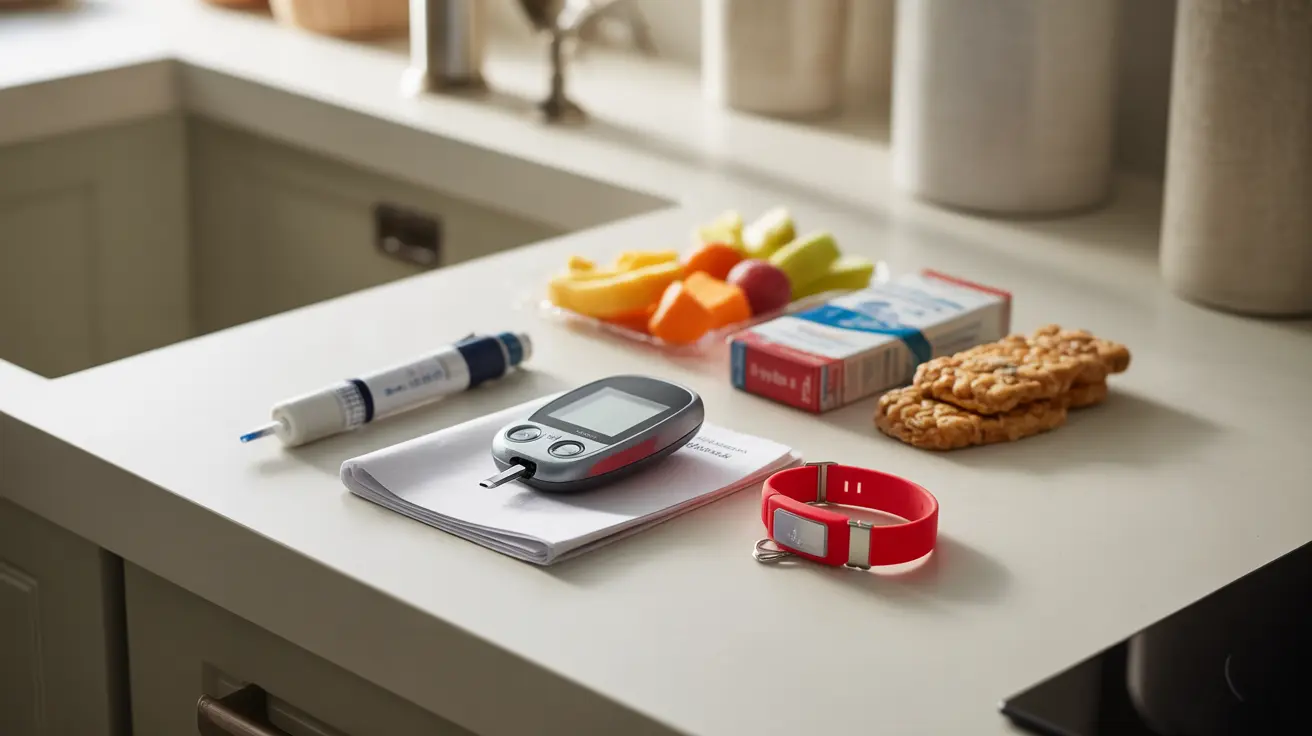Living with diabetes requires consistent management, but unexpected situations like natural disasters, travel delays, or power outages can disrupt your routine and potentially create dangerous health scenarios. A well-prepared diabetic survival kit serves as your safety net during these challenging times, ensuring you have access to critical medications and supplies when you need them most.
Creating a comprehensive emergency kit specifically tailored for diabetes management isn't just about convenience—it's about protecting your health and potentially saving your life. Whether you're planning for hurricane season, preparing for extended travel, or simply want peace of mind during unexpected emergencies, having the right supplies readily available can make the difference between a manageable situation and a medical crisis.
Core Medical Supplies for Your Diabetic Survival Kit
The foundation of any effective diabetic survival kit begins with your essential medications and monitoring equipment. Your insulin supply should be your top priority, as interruptions in insulin therapy can lead to dangerous complications within hours.
Include at least a 7-day supply of all your diabetes medications, including both long-acting and rapid-acting insulin if you use multiple types. Store these in insulated cases to maintain proper temperature, and always check expiration dates regularly. Your blood glucose meter, along with extra test strips and lancets, should also be easily accessible in your kit.
Don't forget backup supplies for your insulin delivery system. If you use an insulin pen, pack extra pen needles and at least one backup pen. For pump users, include infusion sets, reservoirs, and batteries. Manual syringes serve as an excellent backup option regardless of your primary delivery method.
Quick-Acting Carbohydrate Sources and Hypoglycemia Treatment
Low blood sugar episodes can occur without warning, making fast-acting carbohydrates one of the most critical components of your diabetic survival kit. Glucose tablets remain the gold standard for treating hypoglycemia because they provide a precise, measured amount of glucose that acts quickly to raise blood sugar levels.
Pack at least 45-60 grams worth of glucose tablets, which typically equals three to four tubes. These have a long shelf life and won't spoil like other carbohydrate sources. Additionally, include glucose gels or liquid glucose products as alternatives, especially if you have difficulty chewing during severe hypoglycemic episodes.
While glucose tablets are ideal, having backup options ensures you're prepared for any situation. Hard candies, fruit juice boxes, and honey packets can serve as emergency alternatives. However, avoid chocolate or foods high in fat, as these can slow glucose absorption when you need rapid treatment.
Temperature Control and Medication Storage Solutions
Proper storage of temperature-sensitive medications like insulin is crucial for maintaining their effectiveness. Insulin that becomes too hot or freezes loses its potency and may not adequately control your blood sugar levels when you need it most.
Invest in a quality insulin cooling case or portable medication refrigerator for your survival kit. These devices can maintain proper temperatures for hours or even days, depending on the model. For shorter-term storage, cooling packs and insulated pouches provide adequate protection, but avoid direct contact between ice packs and insulin vials to prevent freezing.
During power outages, your medications can remain effective at room temperature for specific periods. Most insulin types maintain potency for 28-42 days when stored between 59-86°F (15-30°C). However, extreme temperatures can significantly shorten this timeframe, making temperature monitoring essential during extended emergencies.
Critical Documentation and Emergency Information
Medical information becomes vital when you're unable to communicate during a diabetes emergency. Your survival kit should include a comprehensive medical information card or folder that first responders and medical professionals can easily locate and understand.
Document your complete diabetes management plan, including medication names, dosages, and timing schedules. List your healthcare providers' contact information, including your endocrinologist, primary care physician, and pharmacy. Include your medical insurance information and any relevant medical identification numbers.
Create a simple emergency action plan that outlines symptoms of both high and low blood sugar, along with appropriate treatment steps. This information proves invaluable if family members, friends, or emergency responders need to assist you during a medical crisis.
Additional Essential Supplies and Considerations
Beyond medications and monitoring equipment, several additional items can significantly improve your preparedness during emergencies. A reliable flashlight and extra batteries ensure you can check blood sugar levels and administer medications even during power outages.
Pack extra snacks that provide both quick-acting and longer-lasting carbohydrates. Crackers, granola bars, and dried fruits offer sustained energy and can help prevent hypoglycemia during stressful situations when meal timing becomes irregular.
Include basic first aid supplies like alcohol swabs, band-aids, and antiseptic cream. These items help maintain proper hygiene when administering injections and treating minor cuts or scrapes that can be particularly problematic for people with diabetes.
Kit Maintenance and Regular Updates
A diabetic survival kit only provides protection when properly maintained and regularly updated. Establish a routine schedule for checking expiration dates on all medications and supplies, replacing items before they expire.
Review and update your medical information documents whenever your treatment plan changes or you switch healthcare providers. Test your blood glucose meter periodically to ensure it's functioning correctly, and replace batteries in electronic devices before they run low.
Consider creating multiple smaller kits for different locations—one for home, one for your car, and one for your workplace. This redundancy ensures you always have access to essential supplies regardless of where an emergency occurs.
Frequently Asked Questions
What supplies should I include in a diabetic emergency kit for travel or unexpected situations?
Your diabetic emergency kit should include a 7-day supply of all medications (insulin, oral medications), blood glucose monitoring supplies (meter, test strips, lancets), glucose tablets or gels for treating low blood sugar, insulin delivery supplies (syringes, pen needles), medical identification information, emergency contact lists, and temperature control supplies for insulin storage.
How long should insulin and other diabetes medications be stored in an emergency kit?
Unopened insulin can be stored at room temperature (59-86°F) for 28-42 days depending on the type, while opened insulin typically lasts 28 days. However, extreme temperatures can significantly reduce this timeframe. Replace emergency insulin supplies every 3-6 months and always check expiration dates. Oral diabetes medications generally have longer shelf lives but should still be rotated regularly.
What information should I keep with my diabetes emergency kit so others can help me during an emergency?
Include a comprehensive medical information card with your name, emergency contacts, healthcare provider information, complete medication list with dosages, blood sugar target ranges, symptoms of high and low blood sugar, treatment instructions for hypoglycemia, medical insurance information, and any relevant allergies or medical conditions.
How do I properly store insulin and other temperature-sensitive supplies during a power outage?
Use insulated cooling cases with gel packs to maintain temperatures between 36-46°F for refrigerated items. Avoid direct contact between ice and insulin to prevent freezing. Room temperature storage (59-86°F) is acceptable for short periods. Monitor temperatures with a thermometer, and if temperatures exceed safe ranges for extended periods, contact your pharmacy or healthcare provider about replacement supplies.
What quick-acting carbohydrates should I pack in my emergency kit to treat low blood sugar?
Glucose tablets are the best option, providing 15 grams of glucose per 3-4 tablets. Pack 45-60 grams total. Alternative options include glucose gels, fruit juice boxes, regular soda, hard candies, or honey packets. Avoid chocolate or high-fat foods as they slow glucose absorption. Always follow the "15-15 rule": consume 15 grams of carbs, wait 15 minutes, then recheck blood sugar levels.




